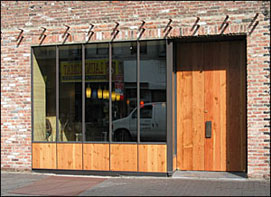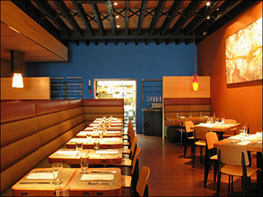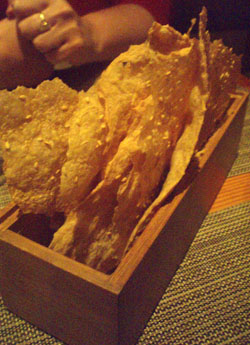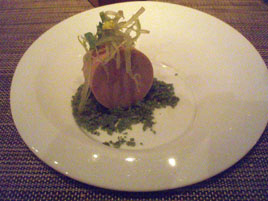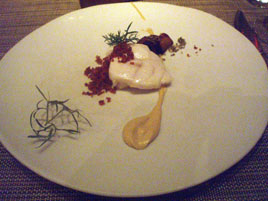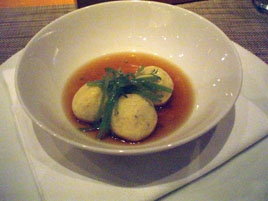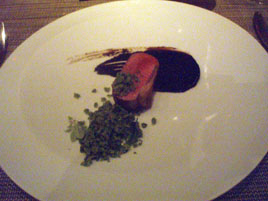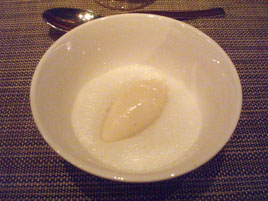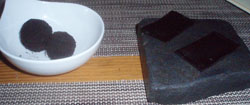Lina Frey
 Monday, September 20, 2010 at 12:35PM
Monday, September 20, 2010 at 12:35PM Note: Lina Frey closed in October 2012.
*
The gritty block on Houston Street that is home to Katz’s Delicatessen, is not where I would expect to find a new French bistro. Lina Frey (named for the owner’s grandma) opened there in June. With late hours and a menu designed for snacking, it’s perfectly situated for revelers to stagger into after pounding the club scenes in the East Village to the north, or the Lower East Side to the south.
If you show up sober, and at a civilized dinner hour, you will find Lina Frey uncrowded, the French food surprisingly good and amazingly cheap. Dinner and drinks came in at under $100, including tax and tip. There isn’t a thing on the menu over $12; most items are $8 or less. What’s surprising is not that there would be a cheap eats joint on Houston Street, but that it would be French, a cuisine that does not usually come to mind when you envision such a place.
When you see these prices, you quickly realize that these plates can’t be full-size, a fact the server didn’t disclose. Nevertheless, it’s not the usual tapas gimmick, where seemingly cheap prices are offset by the need to order double the amount. Six plates to share was ample for us, but even if we’d ordered a few more—the server made no attempt to upsell us—the meal would have remained shockingly inexpensive.
New York Journal’s camera is on the fritz—quelle domage!—so we’ll have to make do with a verbal description. Frisée aux lardons ($6) was a lovely salad. Zucchini & carrot ($5) was slightly more pedestrian, with a cilantro lime honey vinagrette.
Lamb chops ($12) were thick and hearty, with a tart honey mustard glaze. Marinated hangar steak ($9) was just a shade on the tough side, probably due to the source, not its preparation, which was just fine. Haricots vert with caramelized shallots ($4) was the best green bean dish I’ve had in a long time. The same price fetched a bucket of addictive hand-cut fries.
There were three flavors of excellent house-made sangria (pear, mango, and the traditional red), and that’s all we drank. The wine list, as you’d expect, is just functional.
All of the dishes were presented at once, which seemed like an odd service choice: the salads, which required no cooking, should have been delivered earlier. The kitchen here marches to the beat of its own drummer. We asked for an order of the Gratin Dauphinois, and the server said, “It isn’t ready yet.” We wondered, at 8:00 p.m. on a Saturday evening, exactly when they thought it ought to be ready? There were a couple of other minor service issues—earnest and friendly, but occasionally forgetful—that aren’t worth mentioning at a place where the vibe is so casual.
There is plenty of space in the dining room, but it wasn’t close to full. We suspect that their rush comes much later in the evening. (They’re open for breakfast, lunch, and brunch too.) The post-industrial décor is of a piece with the neighborhood. On nice evenings—there may not be many of those left—the front windows are wide open, as they were on Saturday. There is also a huge retractable skylight, which was closed.
This is by no means destination cuisine, but it is very well done, especially at the price: an unexpected little gem.
Lina Frey (201 E. Houston St. between Ludlow & Orchard Streets, Lower East Side)
Food: *
Service: *
Ambiance: *
Overall: *


